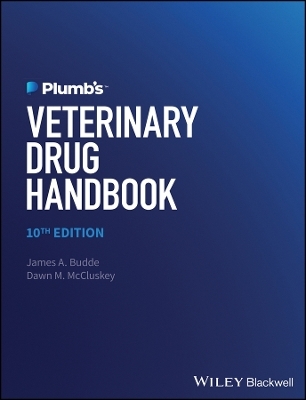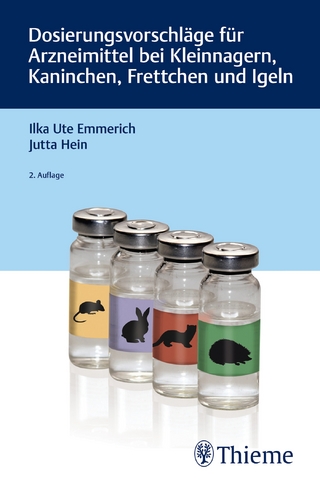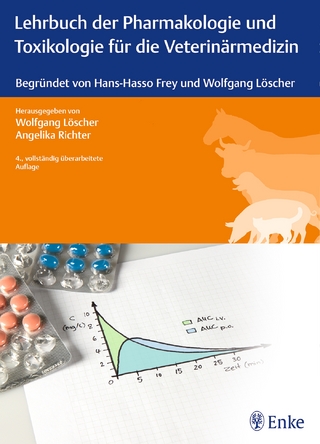
Tabulation of FARAD Comparative and Veterinary Pharmacokinetic Data
Wiley-Blackwell (Verlag)
978-0-8138-1349-3 (ISBN)
The use of therapeutic and antimicrobial agents to prevent, to control, and to eradicate disease in herd animals has without question revolutionized food animal production capacity. But how much of a good thing is too much? 20th century advances in disease diagnosis and treatment have led to 21st century concerns about the health risks posed to consumers when the animals they consume have been exposed to antimicrobials, therapeutic drugs, pesticides and other environmental contaminants. The Food Animal Residue Avoidance Databank provides the pharmacologic data that veterinarians and producers need to screen animals that have been exposed to chemicals and to ensure that dangerously contaminated tissues of food-producing animals do not enter the human food chain.
Established only twenty years ago under the auspices of the USDA, FARAD is an international venture that brings together and collates information on applications of pharmacokinetic principles to drug and chemical residue avoidance—information that previously has been spread throughout the literature. Now, the Tabulation of FARAD Comparative and Veterinary Pharmacokinetic Data brings together in a single source all the most current information on chemical residues in food animals, and provides easy access and numerous tables that offer essential pharmacokinetic data for chemicals in serum, plasma, blood, or in other matrices. This updated one-of-a-kind volume also features additional data on laboratory rodents, dogs, cats, and horses to facilitate broader interspecies extrapolations.
This easy-to-use and newly-updated publication is the essential reference on the subject and belongs in the library of veterinarians, toxicologists, pharmacologists, animal scientists, food hygienists, and regulatory personnel involved in human food safety.
Arthur L. Craigmill, PhD Toxicology Specialist Department of Environmental Toxicology University of California-Davis Jim Riviere, DVM, PhD Burroughs Wellcome Distinguished Professor Director, Center for Cutaneous Toxicology and Residue Pharmacology College of Veterinary Medicine North Carolina State University Alistair I. Webb, BVSc, PhD Professor and Associate Chair Dept. of Physiological Sciences College of Veterinary Medicine University of Florida
About the Authors. Foreword.
Acknowledgements.
Introduction.
SECTION 1. ANTIMICROBIAL AGENTS.
Chapter 1. Penicillins.
Chapter 2. Cephalosporins.
Chapter 3. Tetracyclines.
Chapter 4. Macrolides.
Chapter 5. Aminoglycosides.
Chapter 6. Sulfonamides.
Chapter 7. Fluoroquinolines.
Chapter 8. Miscellaneous.
SECTION 2. THERAPEUTIC DRUGS.
Chapter 1. Central Nervous System.
Chapter 2. Anthelmintics.
Chapter 3. NSAIDs.
Chapter 4. Narcotic Analgesics.
Chapter 5. Hormones.
Chapter 6. Cardiovascular Renal.
Chapter 7. Miscellaneous.
Chapter 8. Antidotes.
SECTION 3. PESTICIDES.
Chapter 1. Organophosphate and Carbamates.
Chapter 2. Organochlorine.
Chapter 3. Pyrethroids.
Chapter 4. Herbicides.
Chapter 5. Rodenticides.
Chapter 6. Fungicides.
Chapter 7. Miscellaneous.
SECTION 4. ENVIRONMENTAL TOXICANTS.
Chapter 1. Dioxins and Dibenzofurans.
Chapter 2. Plant and Animal Toxins.
Chapter 3. Metals.
Chapter 4. PCBs and PBBs.
Chapter 5. Hydrocarbons.
Chapter 6. Miscellaneous.
Bibliography.
Generic Index.
Citation Index.
| Erscheint lt. Verlag | 4.4.2006 |
|---|---|
| Verlagsort | Hoboken |
| Sprache | englisch |
| Maße | 221 x 285 mm |
| Gewicht | 2894 g |
| Themenwelt | Veterinärmedizin ► Klinische Fächer ► Pharmakologie / Toxikologie |
| ISBN-10 | 0-8138-1349-2 / 0813813492 |
| ISBN-13 | 978-0-8138-1349-3 / 9780813813493 |
| Zustand | Neuware |
| Haben Sie eine Frage zum Produkt? |
aus dem Bereich


